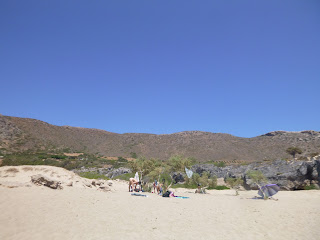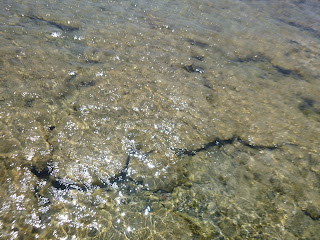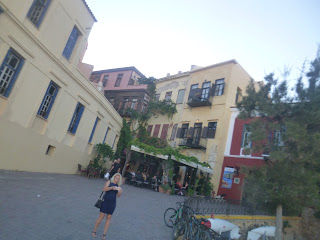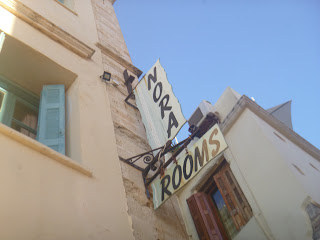A Few Days in Crete
Cosmopolitan and modern, mixed with a majestic past, natural beauty and food you could spend your life with, Greece rarely fails. Our last trip combined Athens and its modern conflicts over currencies, battles over public space, public health, anarchism and currency debates, Greek Orthodox Churches with all their splendor and camp, ancient monasteries and ruines, as well as Tinos, a wonderful island, full of mysteries, a cat who who was probably a demigod, on and on.
This time, we’d spend a few days in Crete, home of the Minotaur and its labyrinth, as well as five thousand years of history to unpack, as a civilization took shape.
The myths are many here, one on top of the other. We saw them every day just making our way through the mountains ans sea sidees of the island, full of ancient trees, rocky cliffs, agriculture and ancient ideas.
“The last western society to worship female powers was Minoan Crete. And significantly, that fell and did not rise again,” said Camille Paglia.
I guess thats just it. This is a place where a civilization was born and disappeared into history, leaving something amiss, we don’t understand, can’t quite reconcile ourselves to. Instead we wander looking, reading the Symposium, wondering whats amiss, whats strange, about the philosophers and writers who were here, who followed, to ponder where we came from
A week ago, we zoomed out of Berlin, to Chania, Crete. Found our way out to KALIVIANI, and a lovely FISH & MEAT TAVERNA for the best sardines, in a small village of 300 or so people with traditional and modern buildings located in the north-west of Crete. Mary Lou told us about her life here. She brought us some desert and Greek raki, distilled in grapes, as a compliment, the first of many along the road. And we slept hard, waking to walk through the village full of characters and cats.
Tuesday
The next morning we woke up, looking about, at the ocean outside our window, the landscape with all its quiet history. Strolled through our tiny village of Kaliviani, looking for breakfast, taking in signs, finding our berrings. And wound our way through the mountains for a day trip to Elafonisi Beach on the west of Crete, clear waters and islet, Italians playing and chatting in the distance, all afternoon. Finishing the afternoon, we crossed the mountains again for a sunset dinner at Captain Fidias Fish Taverna, greeting the goats on the road...
Wednesday
Passed a 900 year old olive tree and a new friend, through windy mountains, on the way to the bluest waters at Kedrodossos Beach, “situated 76 km southwest of Chania and just 2.5 km from the beautiful Elafonisi Beach, with white sand, sparsely situated black rocks and crystal-clear waters.” Finished the day at our fave restaurant, the Kaliviani Fish and Meat Taverna, with the coolest host, the future medical student Mary Lou, chatting about the summer.
Thursday
More adventures on the West Coast of Crete, past farms, cliffs, to lunch at Orange Blue Bar, a cook tiki bar, 10 k South of Kastelli. And just a few minutes to Falasarna, farmers growing melons, tomatoes, into the bluest, turquoise waters. Each day, Greece gets more compelling. You can see how the myths grew from this maze of islands and waters says Caroline, my travelling companion of over 24 years. This is our third Greece trip, the first Lesvos, on our honeymoon, the second Athens and Tinos for ten days in 2022, swimming and greeting Lucy, a demigod in the form of a cat. Each day we meet more cats here who greet us. Mary Lou and the others at our favourite restaurant did us right, with sardines and fresh fish and Greek saland.
Friday
We woke up in time to go for breakfast at the Orange Blue Bar and swim one more time in Falasarna, before making our way North to Chania on the northwest coast of Crete, exploring it's 14th-century Venetian harbor, narrow streets and waterfront restaurants, with Venetian, Egyptian and Ottoman influences. Our first stop, the former monastery of St. Francis houses the Archaeological Museum of Chania. And then off to the Etz Hayyim Synagogue and küçük hassan mosque from the Ottoman days.
And then finding a corner to chill and watch the Olympics, before another early morning travel day.
Took a bus through the modern city, back to our hotel, back to sleep for a few hours and back to Berlin with few more answers than those we came with, just questions and a clues about the cycles, about time and myths and we learn from them.
And a story fell into my in box, reminding me, sometimes all we see are the pictures, their constellations coming together and eluding us, and then re appearing from time time.
“What is the meaning of life? That was all — a simple question; one that tended to close in on one with years. The great revelation had never come. The great revelation perhaps never did come. Instead there were little daily miracles, illuminations, matches struck unexpectedly in the dark; here was one. This, that, and the other, " said Virginia Woolf.




















































































































































































































































No comments:
Post a Comment